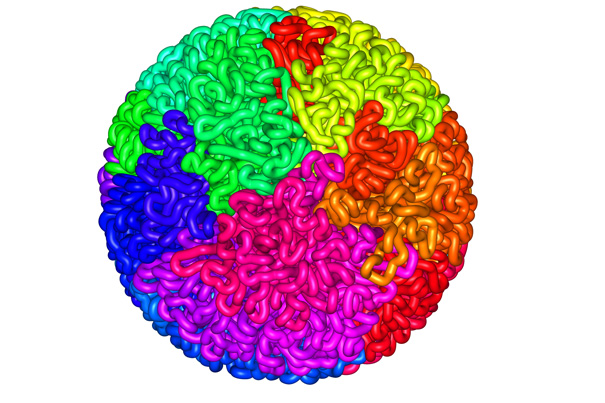A new 3D view of DNA
March 13, 2012
[+]

DNA packs itself tightly into a structure known as a “fractal globule.” The structure is unique in that the genome is completely unknotted. “Despite how densely it’s packed, you can pull on it, easily get to the region you want to transcribe, read it off, and put it back when you’re done,” explained Erez Lieberman Aiden. (Credit: Miriam Huntley, Rob Scharein, and Erez Lieberman-Aiden)
A new imaging technique is giving scientists their first three-dimensional view of the human genome,
The finding, by Erez Lieberman Aiden, a Junior Fellow of the Society of Fellows, working with Nynke van Berkum, Louise Williams, and a team of researchers from the Broad Institute of Harvard and MIT and the University of Massachusetts Medical School, suggests that how DNA is packed into cells may be at least as important as the biological coding it contains.
Producing those 3-D images required an innovative new imaging technique dubbed Hi-C that relies on the genome’s constantly shifting nature.
“Traditional nuclear magnetic resonance imaging techniques are able to determine how far atoms are from each other, and extrapolate the structure of the molecule from that information,” Aiden said. “What we’re doing is quite different. You can think about the genome as a noodle that’s in a rapidly boiling pot. Every once in a while two parts of the noodle collide.
“What Hi-C does is measure the rate at which collisions happen between any two pieces of the genome. As you might expect, points that are nearer to each other are more likely to collide with one another, but sometimes points that are far apart collide more than we would expect.”/.../
No comments:
Post a Comment